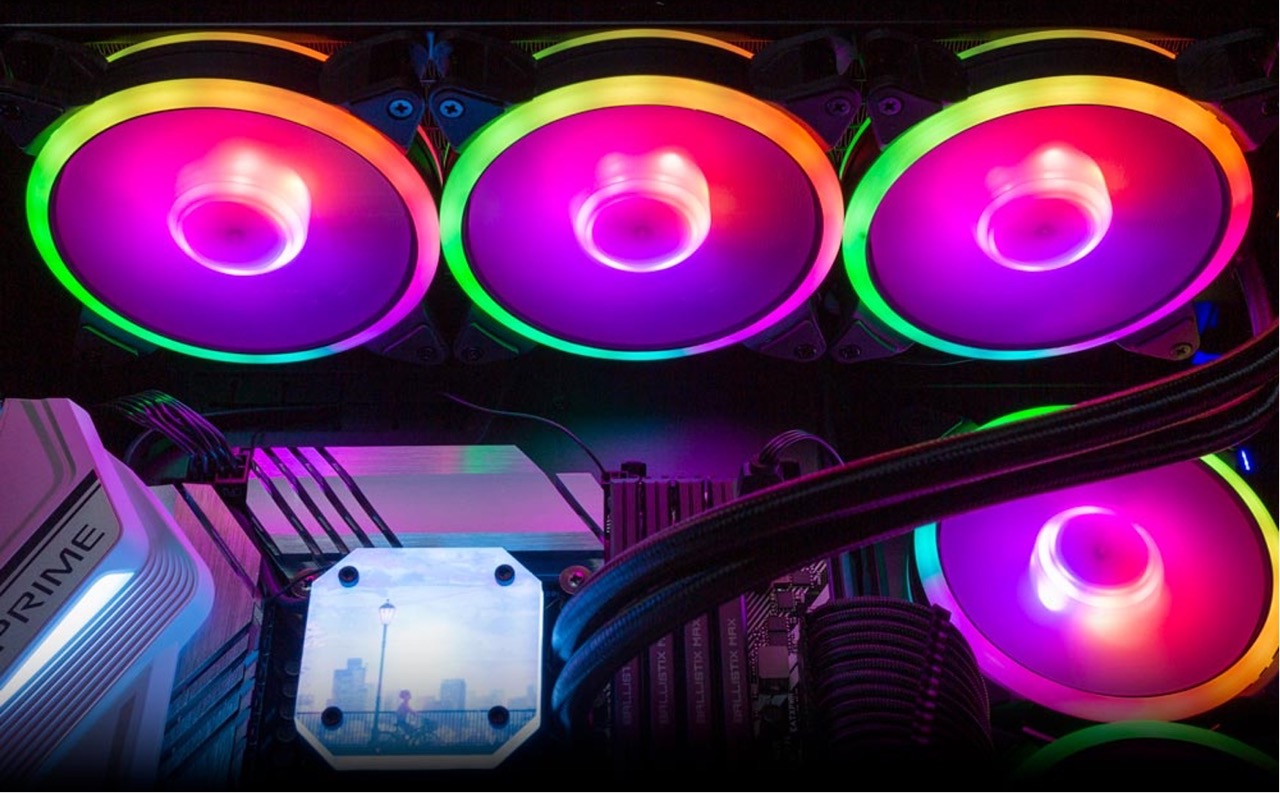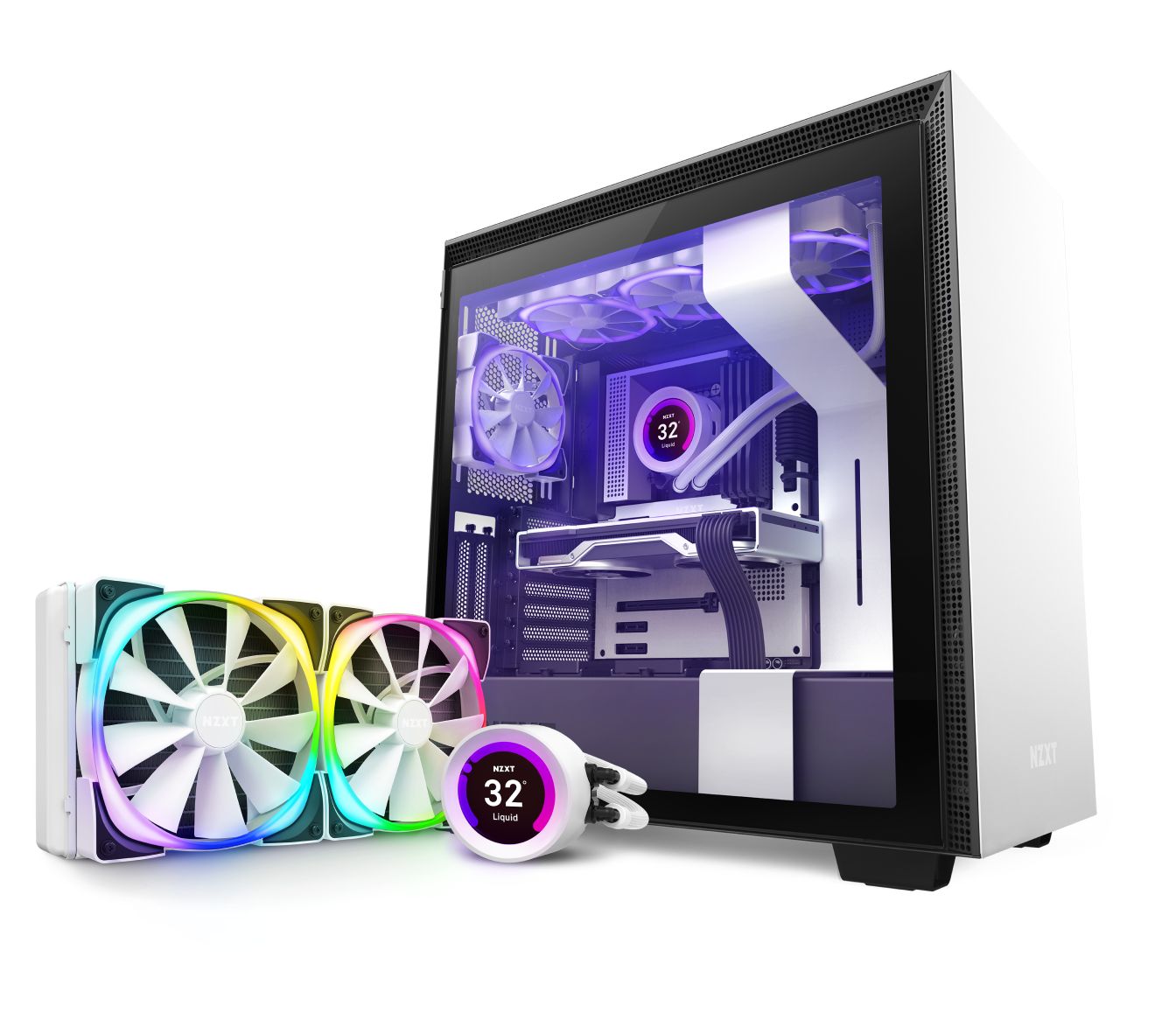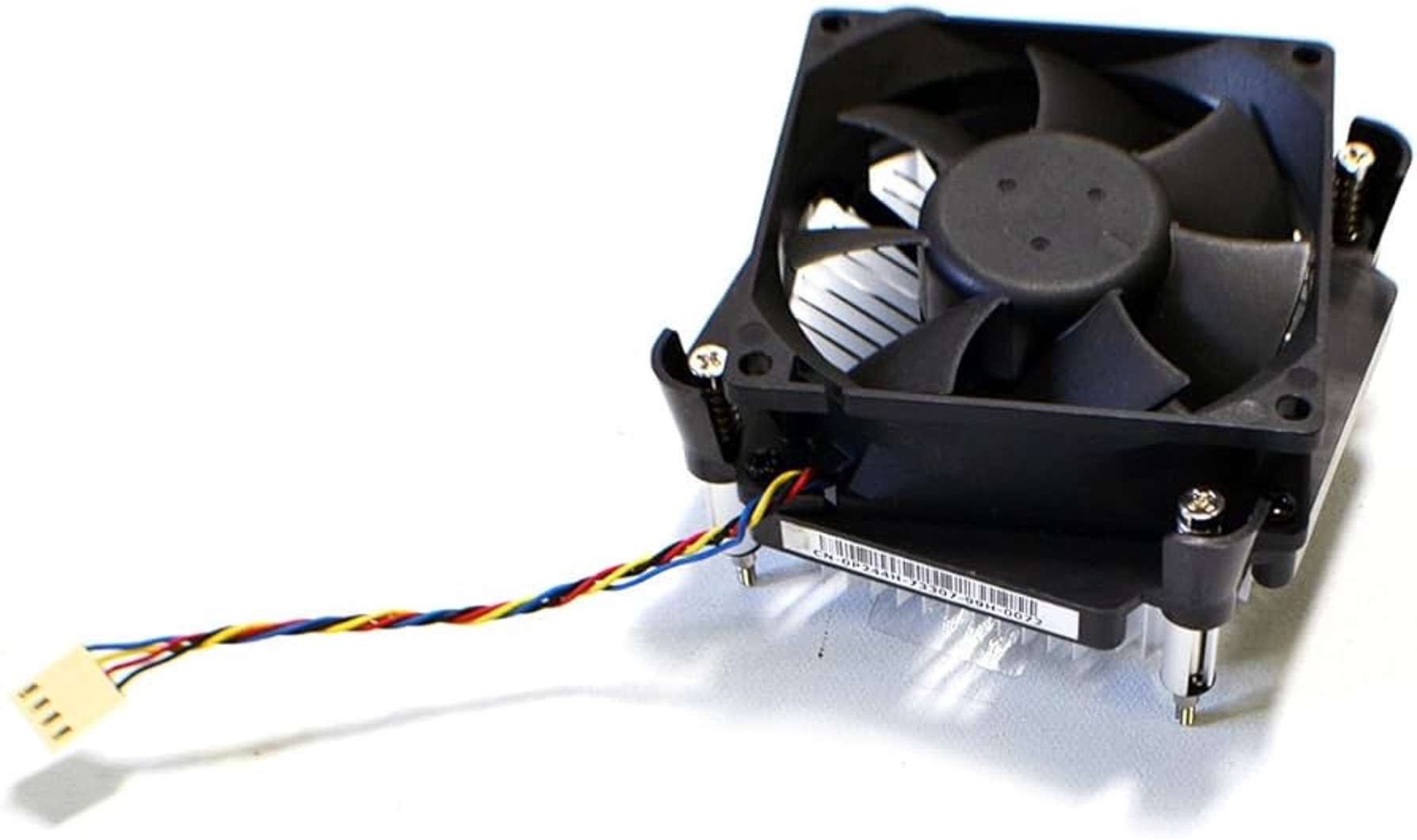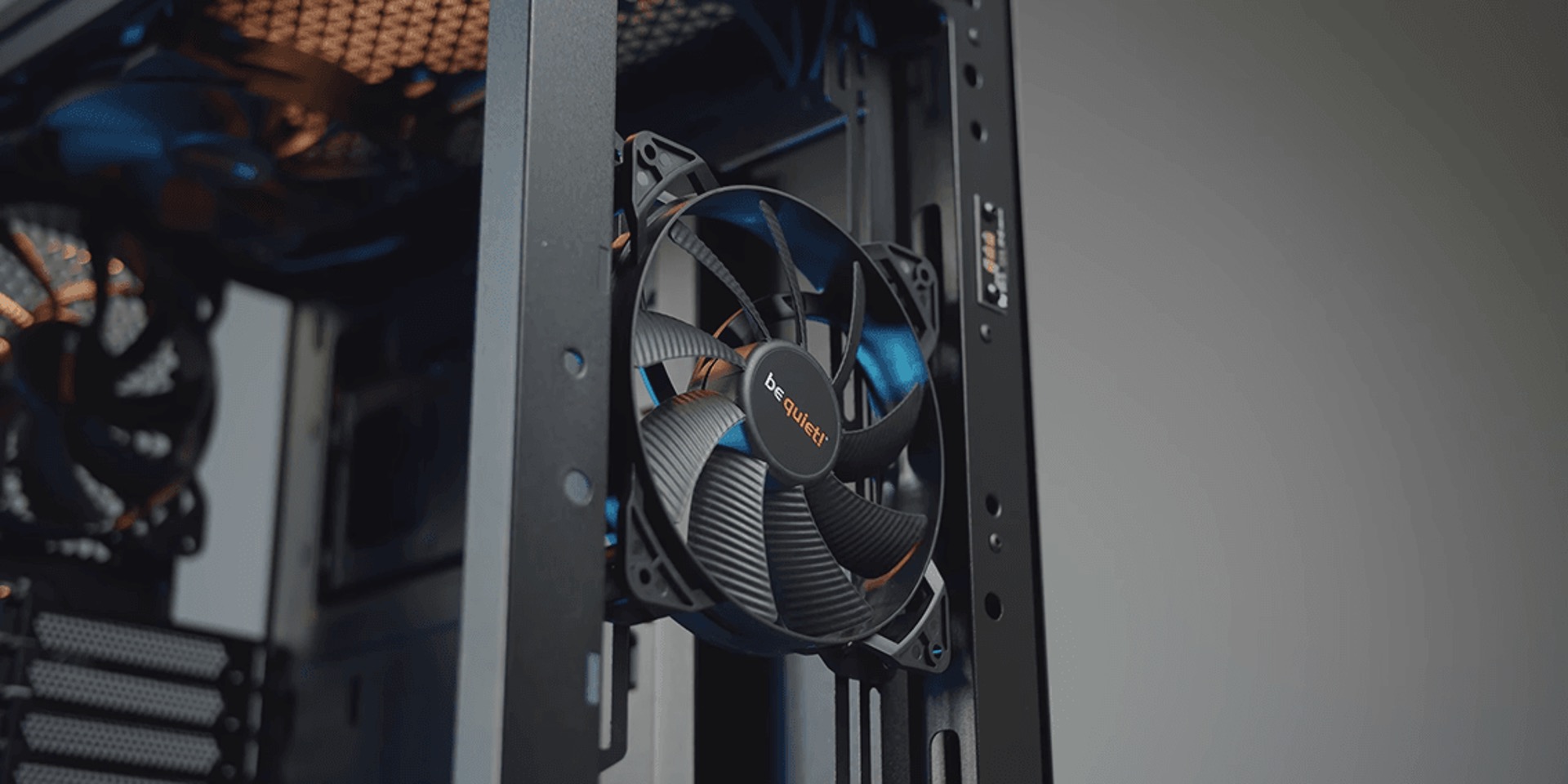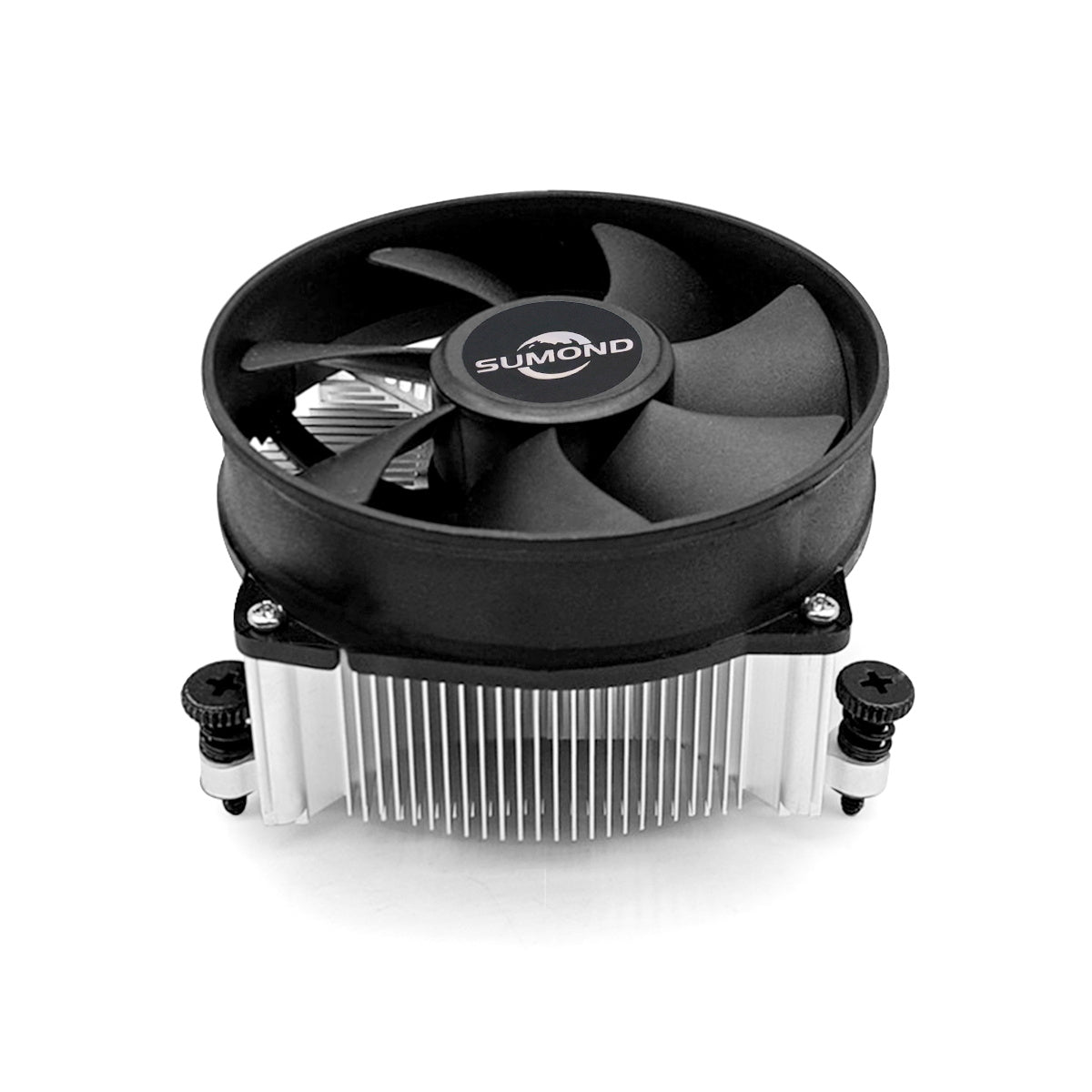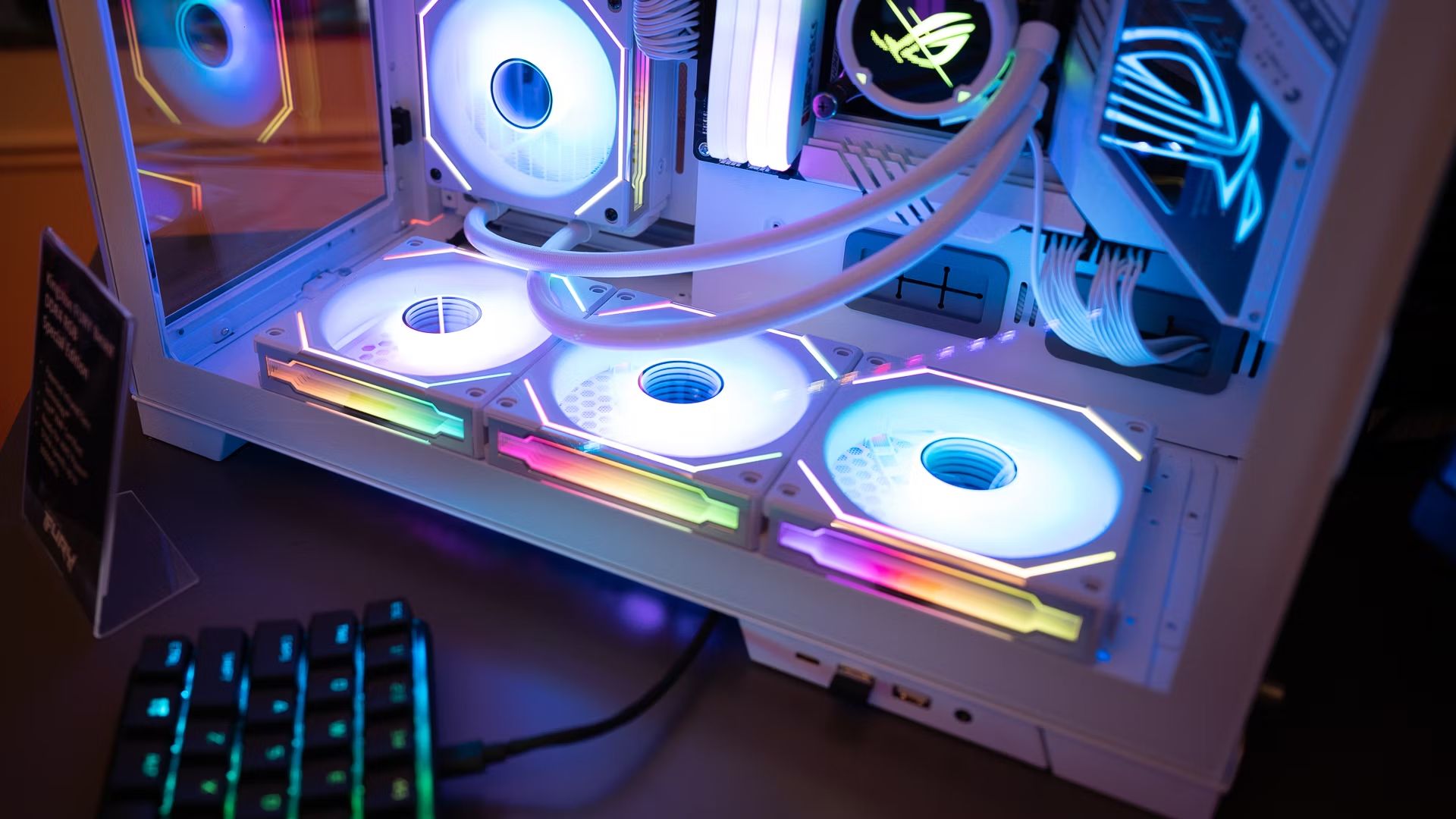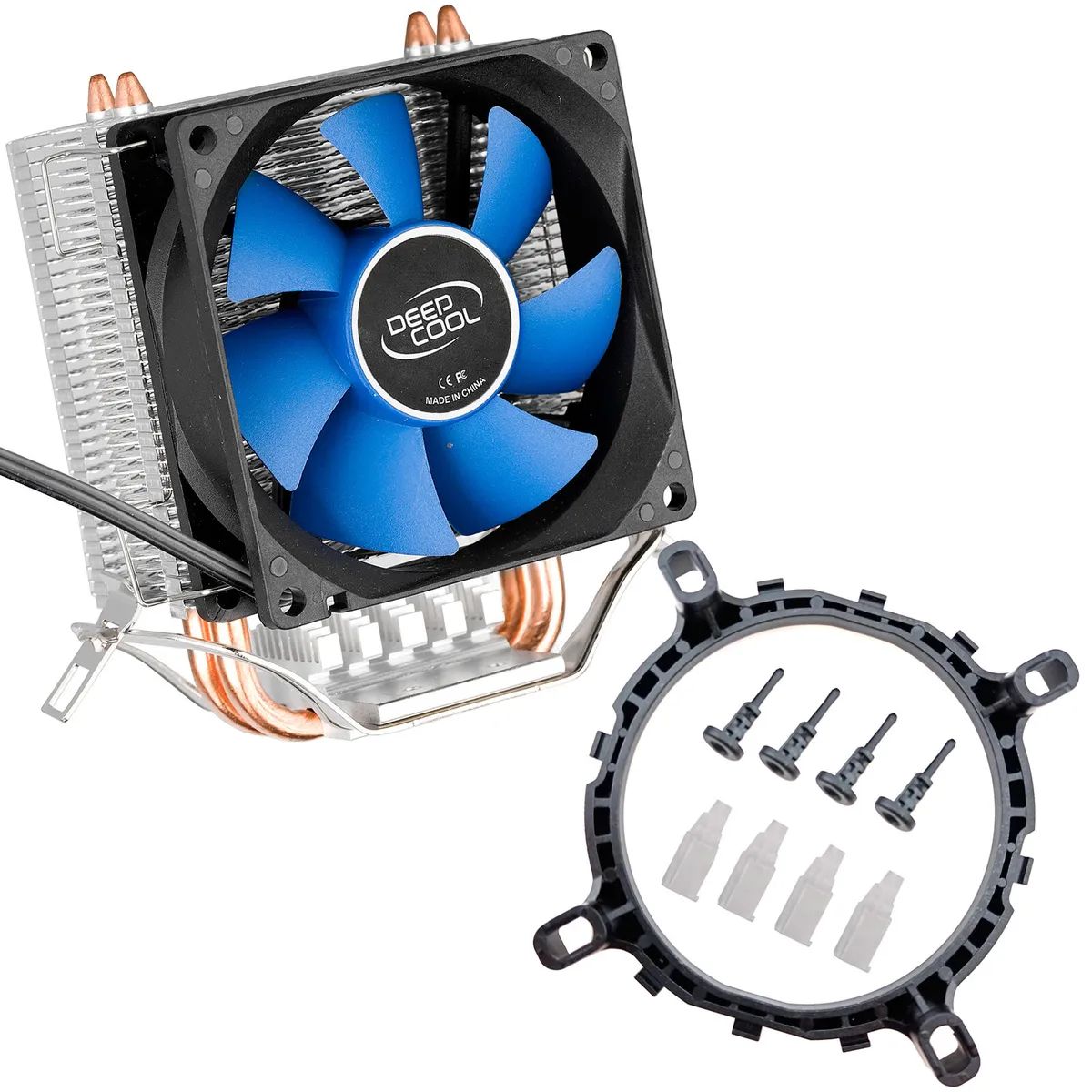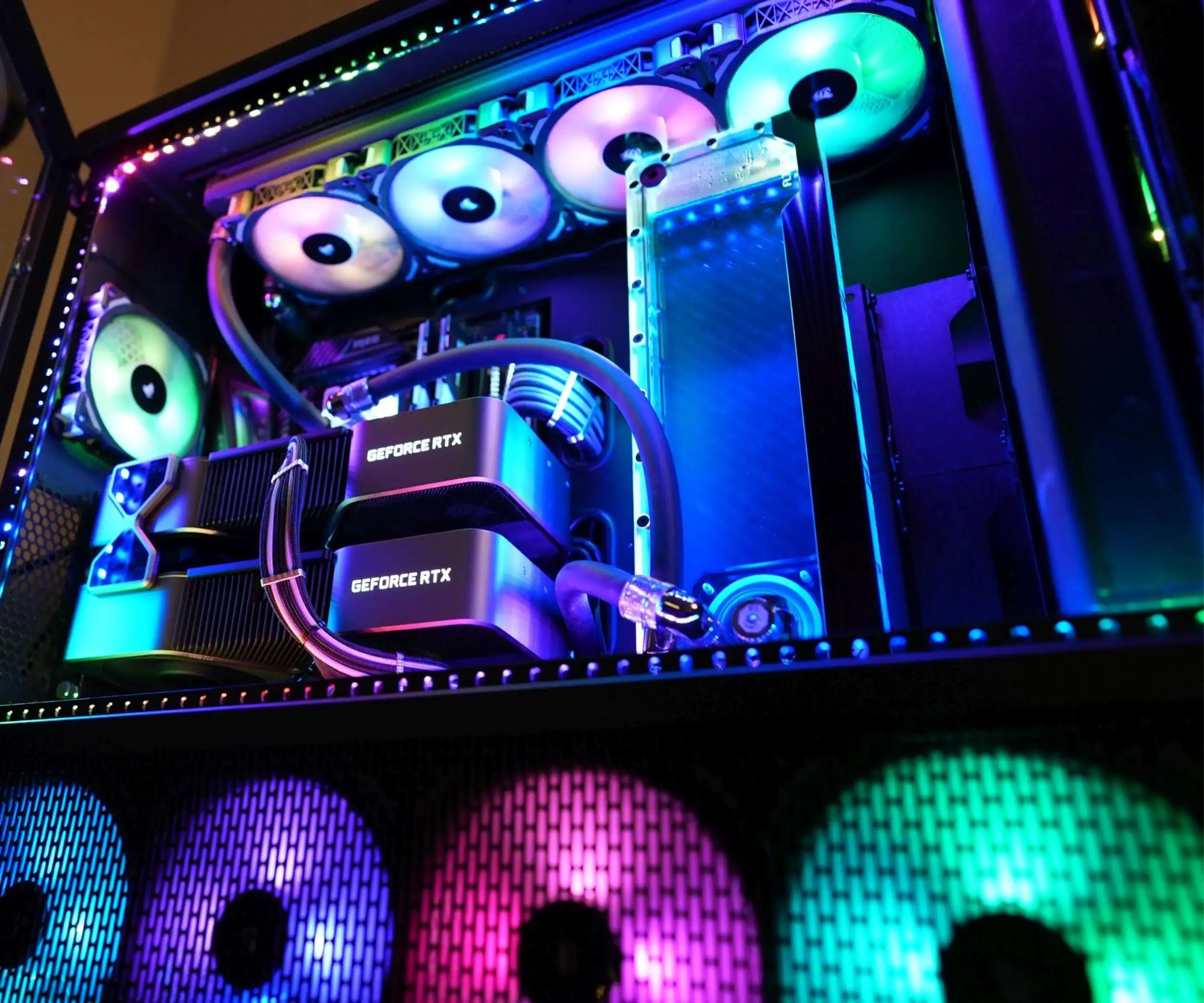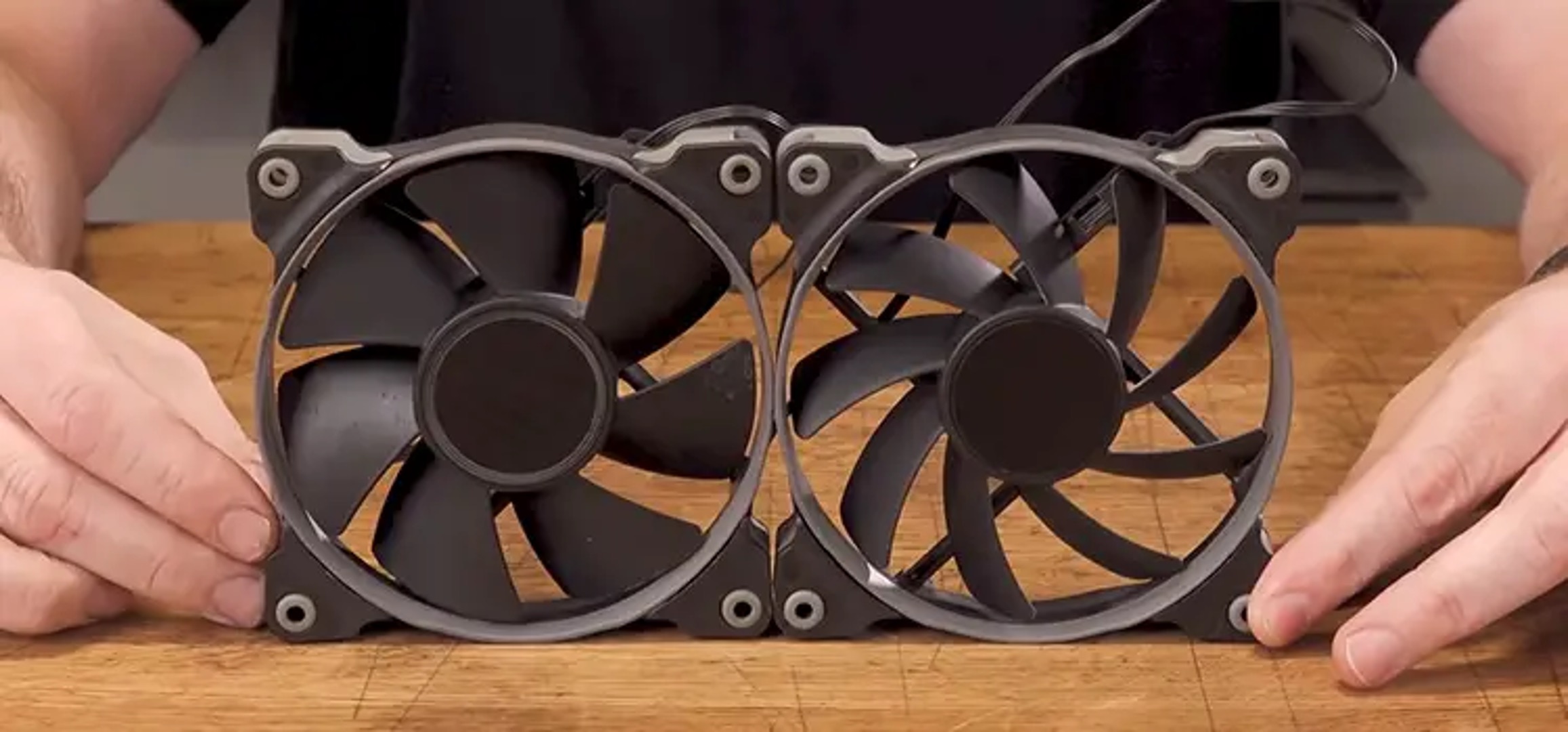Introduction
When it comes to keeping your computer cool and preventing overheating, case fans play a crucial role. These fans help circulate air throughout the computer case, dissipating heat generated by the components. Case fans come in various sizes, with 80mm and 120mm being two common options. However, determining the difference between these fan sizes can often be confusing for users.
In this article, we will explore the key differences between 80mm and 120mm case fans, as well as the factors to consider when choosing between them. Whether you are building a new computer or upgrading your existing one, understanding these differences can help you make an informed decision in selecting the right fan for your needs.
Before diving into the specifics, it’s important to note that the measurements in the fan sizes refer to the width of the fan. An 80mm fan has a width of 80 millimeters, while a 120mm fan has a width of 120 millimeters. These dimensions play a significant role in determining the fan’s performance and compatibility with your computer case.
Now, let’s delve into the differences between 80mm and 120mm case fans in terms of their performance, considerations, and installation requirements. By the end of this article, you will have a better understanding of which fan size is best-suited for your computer setup.
Understanding Fan Sizes
Before we explore the differences between 80mm and 120mm case fans, it’s important to have a basic understanding of fan sizes and how they are measured. Fan sizes are determined based on their dimensions, specifically their width. The width is typically measured in millimeters (mm) and serves as a key indicator of the fan’s size.
When it comes to case fans, the most common sizes you’ll come across are 80mm and 120mm. However, other sizes are also available, ranging from smaller options like 60mm to larger ones like 140mm or even 200mm. The size you choose will depend on several factors such as the available space inside your computer case and the cooling requirements of your components.
While the dimensions of the fan are important, it’s worth mentioning that the fan’s overall performance is not solely determined by its size. Factors such as fan speed, airflow, and static pressure also play a significant role in the cooling efficiency. Nonetheless, the size of the fan does impact its capability to move air and cool the components inside the case.
Now that we have a basic understanding of fan sizes, let’s explore the key differences between 80mm and 120mm case fans and how these variances can affect the cooling performance of your computer.
The Importance of Fan Measurements
When it comes to selecting a case fan for your computer, the measurements of the fan play a vital role in ensuring compatibility and optimal performance. Understanding the importance of fan measurements can help you make an informed decision and avoid potential issues.
The first and most obvious aspect of fan measurements is the physical size. The width of the fan, whether it’s 80mm or 120mm, determines how it will fit inside your computer case. It’s crucial to check the available space in your case and ensure that the chosen fan size will fit without any clearance issues.
Furthermore, fan measurements also impact the airflow and cooling capability. Larger fans, such as 120mm, generally have larger blades and can move more air at lower speeds, resulting in quieter operation. They are also capable of generating higher static pressure, which is essential in cases with dense component placement or tight airflow paths.
On the other hand, smaller fans like the 80mm variant may have to spin faster to achieve similar airflow and static pressure levels as their larger counterparts. This can lead to increased noise levels and potentially limit their cooling efficiency in certain scenarios.
Additionally, it’s important to consider the fan size in relation to the overall cooling setup of your computer. If you have multiple fans installed, having a mix of different sizes can result in varying airflow patterns and potential turbulence. Using fans of the same size allows for a more uniform and balanced airflow, promoting efficient cooling across the entire case.
Lastly, fan measurements can also impact the ease of installation and maintenance. Smaller fans may be easier to install in tight spaces or hard-to-reach areas, while larger fans may require more effort and maneuvering to secure them properly.
By understanding the importance of fan measurements, you can make a more informed decision when selecting the appropriate fan size for your computer case. Consider factors such as available space, cooling requirements, noise levels, and overall system configuration to ensure optimal cooling performance and a hassle-free installation process.
Key Differences Between 80mm and 120mm Case Fans
When comparing 80mm and 120mm case fans, several key differences set them apart. These differences can significantly impact the cooling performance and overall suitability for your computer setup. Let’s delve into the key distinctions between these two fan sizes.
The first and most obvious difference is their size. As the name suggests, an 80mm case fan has a width of 80 millimeters, while a 120mm case fan has a width of 120 millimeters. This variance in size directly affects the amount of air that the fan can move. Larger fans like the 120mm model generally have larger blades and can move more air at lower speeds, resulting in quieter operation. On the other hand, the smaller size of the 80mm fan may require it to spin faster to achieve similar airflow levels.
The airflow and static pressure capabilities of the fans also differ. Due to their larger size, 120mm case fans typically have the advantage in terms of higher airflow and static pressure. This makes them ideal for systems with high-performance components or cases with restricted airflow pathways. The increased airflow can help cool down the components more effectively and prevent overheating.
Noise levels can also vary between the two fan sizes. Generally, larger fans tend to operate at lower speeds to achieve the same level of cooling as smaller fans. As a result, they produce less noise, making them preferable for users who prioritize a quieter computing experience. However, it’s important to note that the noise level of any fan also depends on its design, quality, and the specific RPM (Revolutions Per Minute) settings.
Another factor to consider is the power consumption and compatibility of the fans. Typically, 120mm fans have a higher power draw compared to their 80mm counterparts, as they require more energy to operate at lower speeds. Ensure that your computer’s power supply can handle the additional power requirements of the larger fan if you opt for the 120mm size.
Lastly, compatibility with your computer case is crucial. It’s important to check the dimensions and available mounting options within your case to ensure a proper fit. While most modern cases support both 80mm and 120mm fans, smaller cases or specific form factors may have limitations, allowing only one of the two sizes.
Considering these key differences, it’s essential to assess your specific cooling needs, available space, and noise preferences when deciding between 80mm and 120mm case fans. Evaluating these factors will help you make an informed decision that suits the requirements of your computer system.
Assessing the Performance of 80mm and 120mm Case Fans
When evaluating the performance of 80mm and 120mm case fans, several factors come into play. Let’s take a closer look at how these fan sizes perform in terms of cooling efficiency, noise levels, and overall suitability for various computer setups.
Starting with cooling efficiency, 120mm case fans generally outperform their 80mm counterparts. The larger fan size allows for increased airflow and higher static pressure, which translates to better heat dissipation and improved cooling performance. This makes 120mm fans more suitable for systems with high-end components that generate substantial heat or cases with restricted airflow paths.
While 80mm case fans may not match the cooling capabilities of 120mm fans, they can still provide adequate cooling for less demanding systems or in cases with ample ventilation. Additionally, smaller fans often need to spin faster to achieve similar airflow levels, which can result in increased noise levels compared to larger fans.
Noise levels play a crucial role in determining the overall user experience. The larger blades of 120mm fans allow them to move more air at lower speeds, resulting in quieter operation. This makes them ideal for users who prioritize a silent computing environment. Conversely, 80mm fans may produce more noise due to their smaller size and potentially higher rotation speeds.
When it comes to system compatibility, it’s essential to consider the available space in your computer case. While most cases accommodate both 80mm and 120mm fans, smaller cases or specific form factors may only support one size. Ensure that you choose the fan size that fits within the available space and mounting options of your case to avoid any clearance issues.
Power consumption is another aspect to consider. Generally, 120mm fans have a higher power draw compared to 80mm fans as they require more energy to operate at lower speeds. It’s crucial to ensure that your computer’s power supply can handle the additional power requirements of the larger fan size.
Ultimately, assessing the performance of 80mm and 120mm case fans requires a consideration of your specific cooling needs, available space, and noise preferences. If you have high-performance components or encounter temperature-related issues, a 120mm fan may be the better choice. However, for less demanding systems or cases with ample airflow, an 80mm fan might be sufficient while offering a more budget-friendly option.
By carefully assessing these performance factors, you can choose the appropriate fan size that matches your requirements and strikes the right balance between cooling efficiency and noise levels for your computer setup.
Factors to Consider When Choosing Between 80mm and 120mm Case Fans
When deciding between 80mm and 120mm case fans, several important factors should be taken into consideration. These factors will help you make an informed decision based on your specific needs, requirements, and system configuration. Let’s explore these factors in detail.
Cooling Requirements: Assess the cooling needs of your system. If you have high-performance components or generate a significant amount of heat, a 120mm case fan may be more suitable due to its higher airflow and improved cooling efficiency. For less demanding systems, an 80mm fan can provide adequate cooling.
Available Space: Consider the dimensions and available space in your computer case. Measure the available clearance to ensure that the chosen fan size will fit without any issues. Keep in mind that larger fans may require more space, so make sure to check the compatibility of your case with the desired fan size.
Noise Levels: Evaluate your preference for noise levels. Larger fans like the 120mm variant tend to operate at lower speeds, resulting in quieter operation. If having a silent computing environment is a priority, 120mm fans might be the better choice. However, if noise is not a major concern, an 80mm fan can still provide adequate cooling while potentially being more budget-friendly.
System Configuration: Consider your overall system configuration and potential airflow pathways. If your case has restricted airflow paths or densely packed components, a 120mm fan with higher static pressure can help overcome these challenges. For more open and well-ventilated cases, 80mm fans may provide sufficient cooling without the need for higher Static Pressure.
Power Consumption: Take into account the power requirements of the fans. Generally, 120mm fans have a higher power draw compared to 80mm fans as they require more energy to operate at lower speeds. Ensure that your power supply can handle the additional power requirements of the larger fan if you opt for the 120mm size.
Budget: Consider your budget. 80mm fans are often more affordable compared to their 120mm counterparts. If cost is a significant consideration, an 80mm fan may be a more economical choice while still providing adequate cooling for less demanding system configurations.
By carefully considering these factors – cooling requirements, available space, noise levels, system configuration, power consumption, and budget – you can make an informed decision on whether to choose an 80mm or 120mm case fan that best suits your specific needs.
Installation Considerations for 80mm and 120mm Case Fans
Proper installation of case fans is essential to ensure optimal cooling performance and a reliable computer system. When installing both 80mm and 120mm case fans, there are several key considerations to keep in mind. Let’s explore these installation considerations in detail.
Mounting Locations: Determine the ideal mounting locations for the case fans. Most cases have designated fan mounting locations, typically in the front, rear, or top of the case. Check your case’s specifications or manual to identify these locations and ensure compatibility with your chosen fan size.
Orientation and Airflow Direction: Consider the desired airflow direction within your case. The general rule of thumb is to have intake fans at the front or bottom of the case, bringing in cool air, and exhaust fans at the rear or top, expelling hot air. Ensure that the airflow direction aligns with the fan’s orientation to maximize cooling efficiency.
Clearance and Cable Management: Check for any clearance issues and ensure that the chosen fan size will fit without obstructing other components or cables. Plan your cable management strategy to prevent cables from interfering with the fan blades or impeding airflow. Neat and organized cable management will help maintain efficient airflow within the case.
Securing the Fans: Properly secure the fans to prevent vibrations or rattling. Most case fans come with mounting screws or rubberized mounts that help minimize noise and vibration. Follow the manufacturer’s instructions for proper installation to ensure stability and reduce the risk of any damage to the fan or case.
Additional Considerations: Consider any additional factors that may impact the installation. This could include factors such as the number of available fan headers on your motherboard, the need for fan splitters or molex adapters, or the use of fan speed control features to customize the fan’s RPM settings.
Remember to consult your computer case and motherboard’s user manual for any specific instructions or limitations regarding fan installation. Following the recommended guidelines and taking the necessary precautions will help ensure a smooth and successful installation process.
By considering these installation considerations, you can effectively install both 80mm and 120mm case fans in your computer, promoting efficient cooling, and maintaining a stable and reliable system.
Conclusion
Choosing between 80mm and 120mm case fans requires careful consideration of various factors to ensure optimal cooling performance and compatibility with your computer system. By understanding the differences in size, performance, and installation requirements, you can make an informed decision that suits your specific needs.
While 120mm case fans generally offer superior cooling efficiency and lower noise levels, they may not be necessary for all systems. If you have a less demanding setup or limited space in your case, an 80mm fan can still provide adequate cooling while being more budget-friendly.
Consider factors such as your cooling requirements, available space, noise preferences, system configuration, power consumption, and budget. Assessing these factors will help you choose the right fan size that strikes the right balance for your computer setup.
Additionally, when installing case fans, ensure proper mounting, orientation, and cable management to maximize airflow and minimize noise. Consider the mounting locations, airflow direction, clearance requirements, and how to secure the fans effectively.
With the appropriate fan size and proper installation, you can maintain optimal temperatures within your computer case, preventing overheating and maintaining the performance and longevity of your components.
Remember to consult your specific case and motherboard manuals for any specific instructions or limitations regarding fan sizes and installation procedures.
By carefully considering all these factors and following the necessary steps, you can ensure proper cooling and a stable and reliable computer system, allowing you to enjoy optimal performance and longevity for your components.







